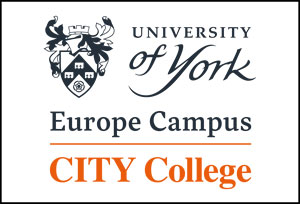Harm Reduction Investment in the European Union: Current funding, challenges and successes
On April 25th, HRI launched our new report ‘Harm Reduction Investment in the European Union’ at the Leopold Hotel in Brussels.
Despite Europe being home to several countries with a long history of harm reduction implementation, HRI report highlights funding crises in several EU states that are crippling harm reduction services. HRI’s research has had a particular focus on seven countries: Italy, Greece, Portugal, Estonia, Czech Republic, Hungary and Lithuania. In 2016, HRI held two regional events to share initial research findings and discuss harm reduction funding with local stakeholders in Southern and Eastern Europe. For details on the regional meetings click here.
Mr Papamalis was the lead researcher for Greece in this European study. The Greek organizations that participated and contributed to conduct this study in Greece were OKANA, KELPNO, NGO Praxis, the Center for Life, Association of People Living with HIV in Greece «Positive Voice», NGO DIOGENIS, Drug & Substitute Users Union, NGO PROMITHEAS and the EKTEPN (EMCDDA National Focal Point in Greece).
https://www.hri.global/files/2017/04/25/thepolicy2017_online_version.pdf
Mr Papamalis conducted several targeted stakeholder consultations including the experience and the views of those affected by the policies and involved in their implementation is a valuable tool for transparent and informed policy-making. In order to collect data on the current situation of the financial investments in harm reduction programming and the interventions that are supported with this investment in Greece all relevant stakeholders had the opportunity to express their opinion, have sufficient time for responses and provided with adequate feedback regarding the consultation process, its aims and goals.
Mr Papamalis also conducted several semi-structural interviews based on topic guide with relevant stakeholders and Policy makers. Data obtained from the semi-structured interviews with relevant stakeholders provided a thorough understanding on the harm reduction investment, their capacities, resources, needs and gaps. The predefined questions of the interview protocol were based mainly on the Investment Tracking Tool provided by HRI, but also included thematic areas from the online survey also provided by HRI. As an example, for OKANA (Organisation Against Drugs) which is responsible for the substitution treatment in Greece, the questions were targeted mainly on OST, while in the interview with KEELPNO (Hellenic Centre for Disease Control and Prevention), the questions were targeted on ART. Active involvement of the beneficiaries & target groups enabled better understanding of their problems, highlight potential methods of addressing them and set the grounds for the participatory planning process.
The structural interviews involved thematic areas that cover:
-
Demographics such as the number of people enrolled in OST programme nationwide / or the total number of people received OST through projects; the number of people enrolled in NSP programme nationwide; the number of people who inject drugs living with HIV on ART nationwide etc.
-
National spending on OST, NSP, ART
-
Programme spending with breakdowns for OST, NSP, ART
-
Coverage nationwide OST, NSP, ART and contribution of international funding
-
Funding allocation and decision making
-
Funding challenges and gaps
-
Sustainability of harm reduction
-
Focus Group Discussion (FGD)
At the second stage, Focus Group Discussions (FGD) were conducted to gather information on harm reduction, identify potential problems, funding gaps and challenges, as well as distribution of harm reduction funds. Mr Papamalis as a facilitator used the topic guide to organise the discussion among participants. The topic guide included a set of structured questions to steer the discussions. A note taker was recording the participants’ comments.
The topic guide of the FGD assessed areas related to:
- Source, allocation and distribution of harm reduction funds
- Advocacy for harm reduction investment
- Funding gaps and trends
- Future funding landscape for harm reduction programmes
The FGD complement and supplement the information obtained from the surveys, providing critical information for triangulating survey and interview data from the participating sites. At the second stage, the findings from both stages were validated. This methodology provided data that were beyond the current research scope and created a ‘map’ of funding gaps ‘hotspots’ and challenges that can be prioritized and further analysed with the participated organizations. This ‘mapping’ will be communicated in a participatory manner with the relevant stakeholders and will set the grounds for future work in this field. In addition, outside experts’ opinions were sought.
Three data collection tools were used for this study. The first is the Investment Tracking Tool provided by HRI and allow to capture the investment into harm reduction, the sources of funding and how these funds have been spent (e.g. interventions, geographical area and particular groups reached). The second is the Harm Reduction Works, also provided by HRI and consists on an online survey that also assists capturing the source, allocation and distribution of harm reduction funds, funding gaps and trends as well as future funding landscape for harm reduction programs in Greece. Finally, the third is the Topic Guide used for the interviews and the focus group that encompass questions from the above mentioned tools. If you want to read the full report please click below
https://www.hri.global/files/2017/04/25/HRWreportApril2017_web_1.pdf





